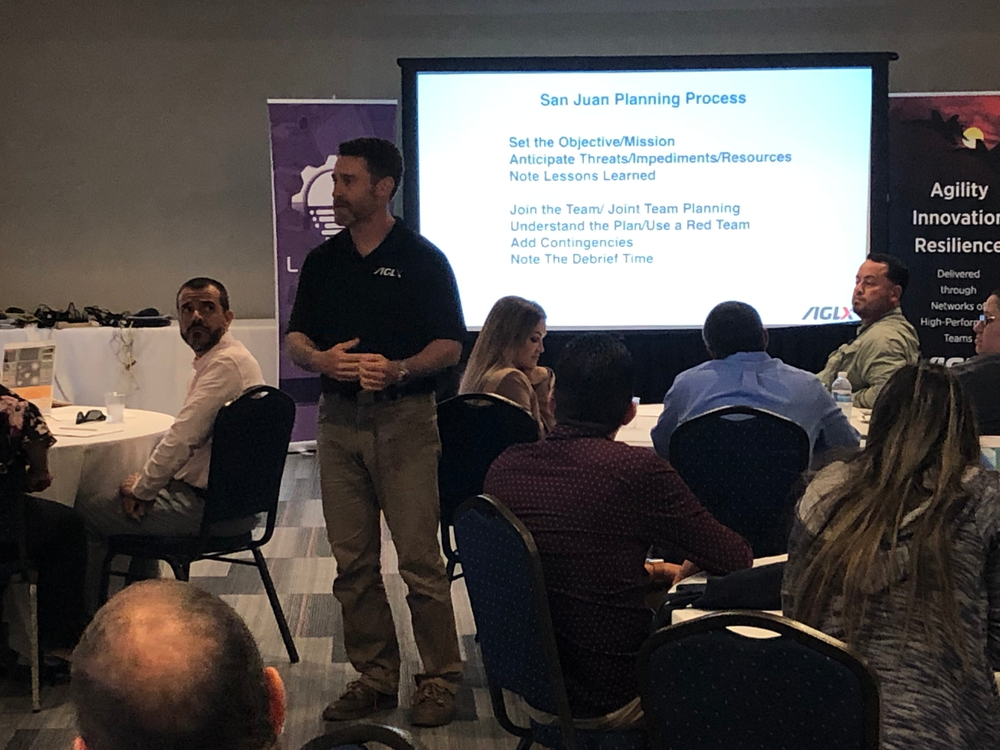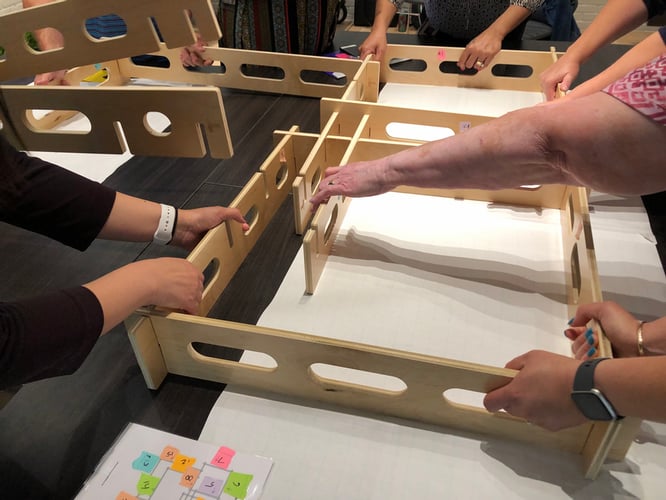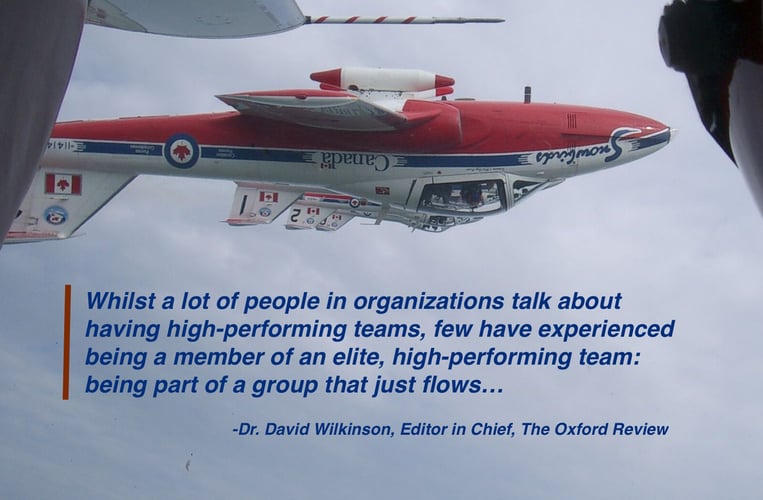
Back in 2014, when the July 2013 Scrum Guide was current and before the book, Scrum: The Art of Doing Twice the Work in Half the Time was published, a group of former TOPGUNs sat in an Atlanta-area restaurant talking about the Daily Scrum and how lessons from fighter aviation can be found in everything from teamwork in healthcare to the concept of fast transients (pivot) in the Lean Startup.
I was one of the few at the table as was former Afterburner CEO and author, James “Murph” Murphy, retired Air Force LtCol, Tomas “Mad Dog” Friend (not the train) and a former RF-4C pilot who happened to be the co-creator of Scrum, Jeff Sutherland. The topic of the daily Scrum came up and Jeff said he wanted the Daily Scrum to be more like a football huddle, a re-planning session of sorts. He also suggested that the current format of the Daily Scrum found in the Scrum Guide was inadequate. We all agreed.
Daily Scrum according to the July 2013 Scrum Guide
“The importance of the Daily Scrum as a planning event is reinforced.” The 2013 Scrum Guide continues, “To that end, the three questions have been reformulated to emphasize the team over the individual.”
A. What did I do yesterday that helped the Development Team meet the Sprint Goal?
B. What will I do today to help the Development Team meet the Sprint Goal?
C. Do I see any impediments that prevents me or the Development Team from meeting the Sprint Goal?
At the time of our meeting, three of us at the table were coaching the National Football League and various companies on how to do conduct effect planning and re-planning session using lessons from TOPGUN. We shared with Jeff Sutherland how we would improve the daily Scrum using what comes natural to aviators: planning.
Daily Scrum Three Questions: A Lesson on How Not to Plan
Now, this should come as no surprise but if you applied the Daily Scrum three questions from the 2013 Scrum Guide to a planning session, you would not have a plan, you would several individuals answering three questions while they competed in a shoe-staring contest.
Try using the three questions from the July 2013 Scrum Guide to come up with a plan, any plan. You cannot. Why? Well, first off, the most important question is missing: What are we trying to do as a team? Without a common mission/objective, you do not have a team. You have people working on stuff. You have a team in name only.
Next, waiting for everyone to go through the three questions is a great way to hide or bury impediments. How many times have you used the three-question approach only to find the last person who speaks has an impediment that impacts everything that was just shared by other team members? Impediments need to be shared early in a planning or re-planning session.
What are some examples of effective Daily Scrums?
Perhaps you can pull something here From Echelon Front’s Planning process found in the book, Extreme Ownership:
- Analyze the Mission
- Identify Personnel
- Decentralize the Planning Process
- Determine a specific course of action
- Empower Key Leaders to develop the plan
- Plan for Likely Contingencies
- Mitigate Risks
- Delegate
- Continually Check and Question the Plan
- Brief the plan
- Conduct Post-Operational Debrief After Execution
Or from Afterburner’s Six Step Mission Planning Process:
- Determine the Mission Objective
- Identify the Threats
- Identify Available and Required Resources
- Evaluate Lessons Learned
- Develop a Course of Action
- Plan for Contingencies
Or from former U.S Navy SEAL Brent Gleeson:
- Identify the Specific Objective
- Understand Blockages
- List Resources
- Apply Lessons Learned
- Actions
- Red Team
- Develop Contingencies
Or from the SAN JUAN Planning Process (developed in-situ during an AGLX workshop in Puerto Rico):
- Set the Objective
- Anticipate Threats/Impediments/Resources
- Note Lessons Learned
- Join the Team/Joint Planning Team
- Understand the Plan/Use a Red Team
- Add Contingencies
- Note the Debrief Time

Or from the T.O.Y.O.T.A. Planning Process (check AgileCamp Dallas for more details).
If you are using the three Daily Scrum questions from the 2013 Scrum Guide to guide your daily Scrum, perhaps you should take note of the 2017 Scrum Guide and inform your Scrum Master that “The structure of the meeting is set by the Development Team and can be conducted in different ways if it focuses on progress toward the Sprint Goal.” The three questions, according to the 2017 Scrum Guide, are an example of “what might be used.”
Remember that how you interact (interactions) is more important than a method that tells you to interact (Yes, Scrum is a method, not a framework; more on that some other time.) The Scrum Guide is not a substitute for good teamwork and only provides guidance on key team interaction points; what you put in Scrum matters. Effective Teamwork or teaming, for those who are interested, has roots in the military—specifically fighter aviation. Coincidentally, so does Scrum.



